
Here we take a brief look at ‘The Rocket’ which was the ‘house journal’ of the Clay Cross Company which was first published the 1960s. This once well-known company was established in 1837 by George Stephenson and his associates. It’s now fast receding into memories, as the former manufacturing site, which closed in 1998, becomes developed particularly for housing.
We recently posted on how we use company magazines to help chart the history of particular businesses. We also pointed out that family historians may find photographs and a brief account of their relative’s time at the company, in these magazines. Such articles might include retirement, long-service, marriage and death. It’s a feature of these magazines not to be over-looked.
Latterly the Clay Cross company became known for its pipe castings, but it had owned collieries, quarries, foundries and even a large farm and a light railway out to its quarries at Ashover.
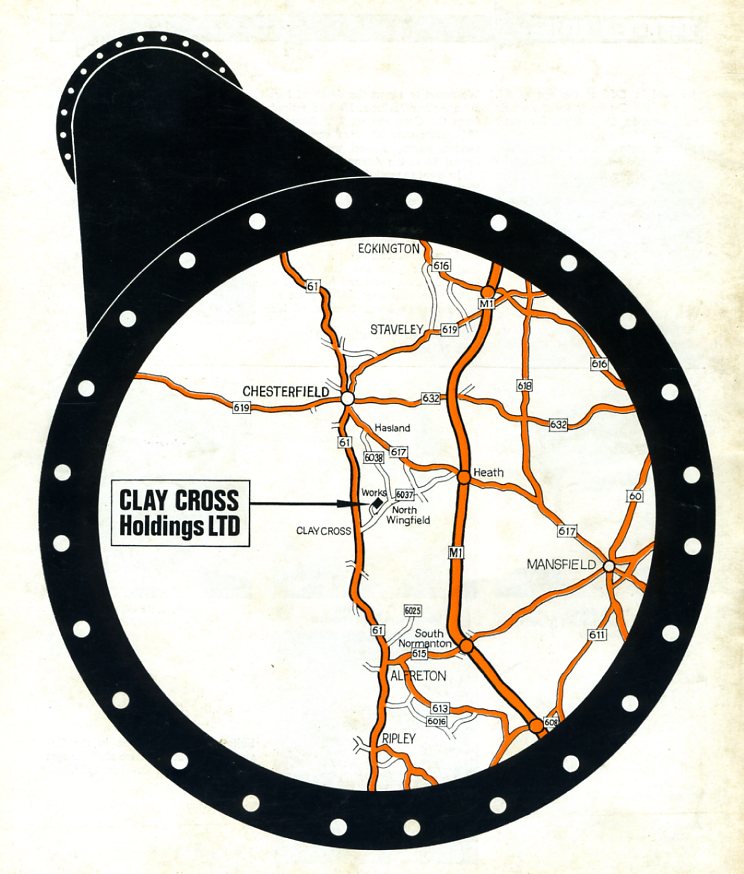
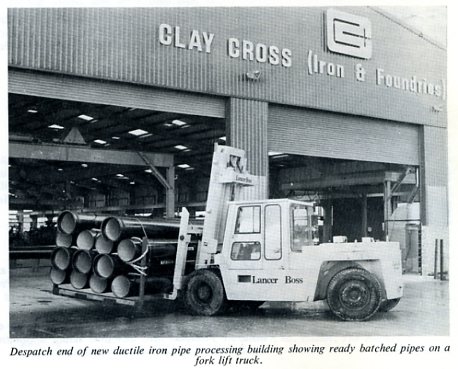

‘The Rocket’– number 36, Summer 1987 – shown here, celebrated the Clay Cross Company’s 150th anniversary. The front cover of this special edition is shown with an engraving taken from FS Williams’ 1876 book ‘The Midland Railway: its rise and progress’. It shows the Clay Cross Company in the ‘V’ of the railway lines. The right-hand line is to Derby, the left is the Erewash Valley line.
For some years ‘The Rocket’ usually featured an article from RF Childs, who was the company estates manager. Our illustration of him is taken from issue 27, from late 1979. It shows him in the company’s ‘archive room’ which he had helped create in that year. Dick Childs retired in 1986. The company archive included Stephenson letters, minute books, photographs, plans and other records. The company archives are now split between the Derbyshire Record Office and the Institution of Mechanical Engineers.
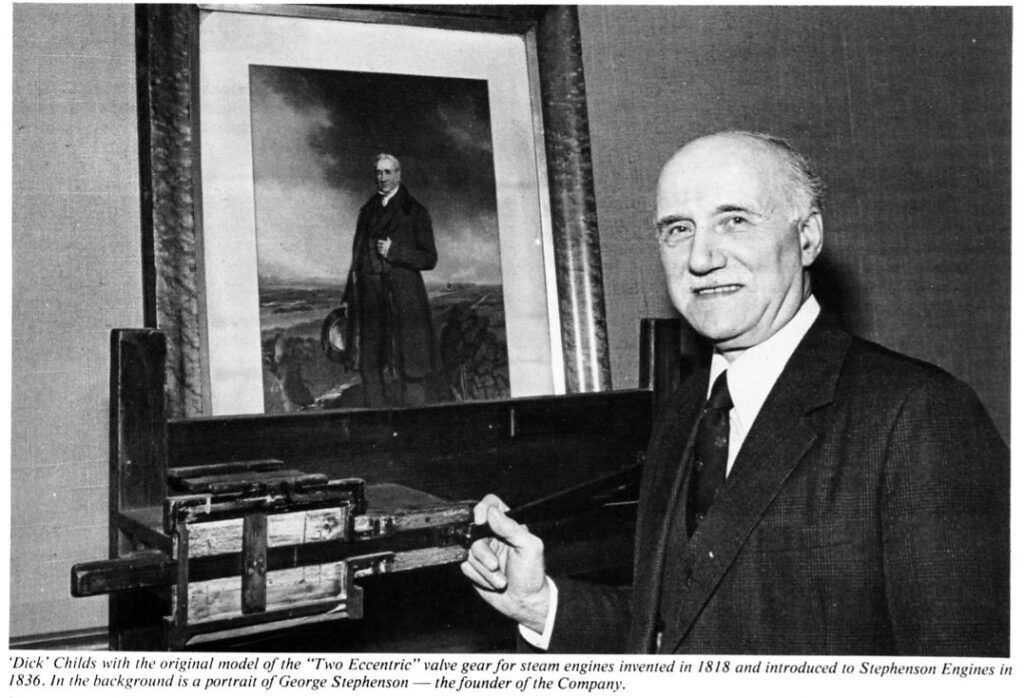
The yellow covered edition featured here is number 35 (winter 1986) – the first to be fully produced under the Biwater group’s ownership. The front cover shows pipes for a contract in Malaya stocked within the works car park. It was taken by the works Technical Department’s Adrian Smith. For those who know the area North Wingfield parish church might just be discerned on the centre horizon.
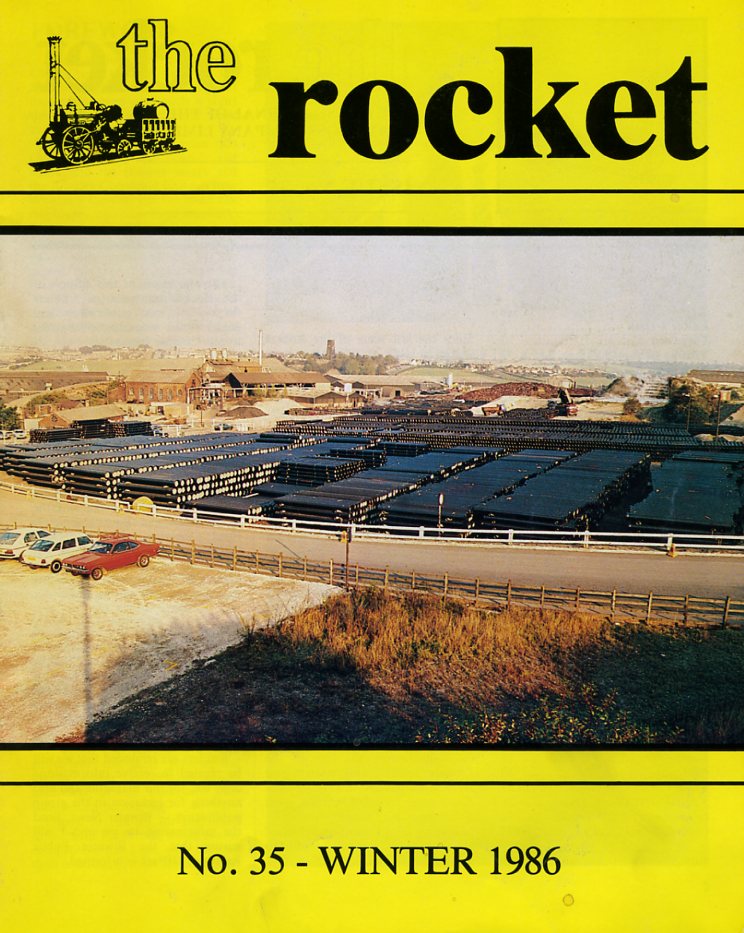
‘The Rocket’ was usually around 20 pages in length. Like many of its kind, it paints a picture of corporate life including newly opened production facilities, management changes and acquisitions. Sports and other social activities, along with marriages, retirements and deaths are also carried within its pages. Our final illustration is taken from issue number 8 of January 1968. It features some of those little snippets of information that we feel may be of interest to family historians. Note that Mr LV Clarke was retiring after 51½ years of service to the company!
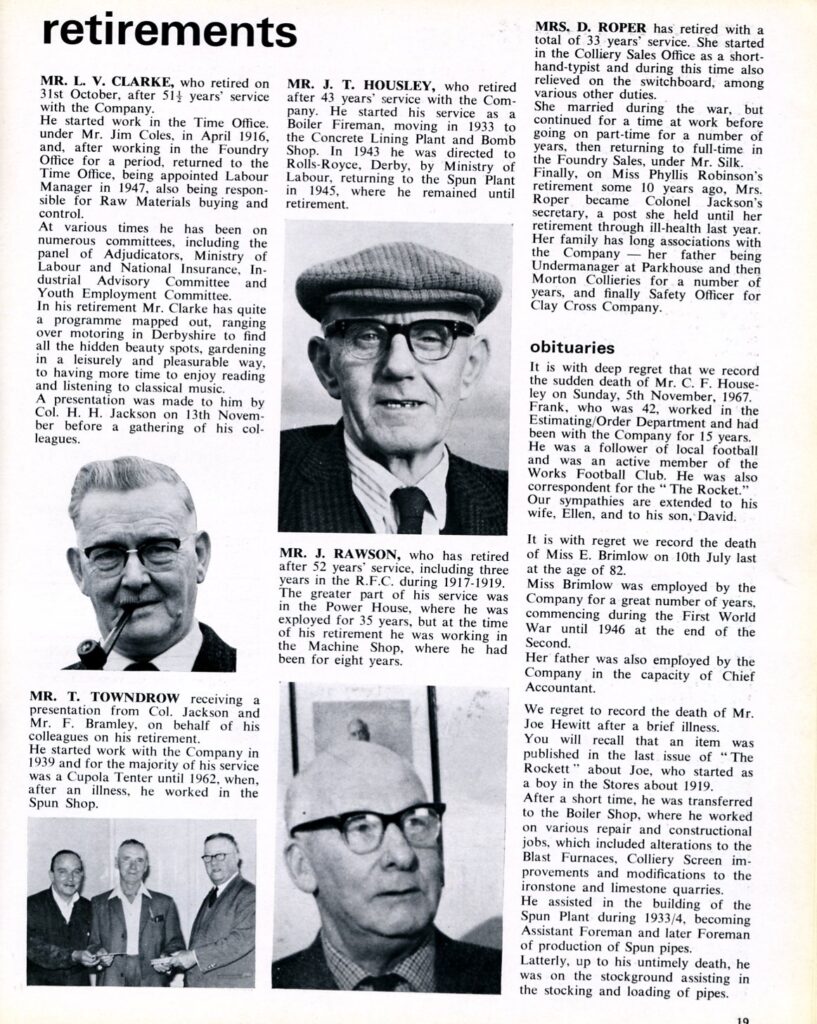
One wonders how likely it will be to attain over 51 years service with one company in today’s ever changing job market? But Mr LV Clarke did, as recorded in this extract from the January 1968 ‘The Rocket’ (number 8).
Like Clay Cross works itself, ‘The Rocket’ is now a memory, but a tangible one. For as the works is regenerated and disappears copies of the magazine will survive in local studies libraries and perhaps become treasured family possessions.
